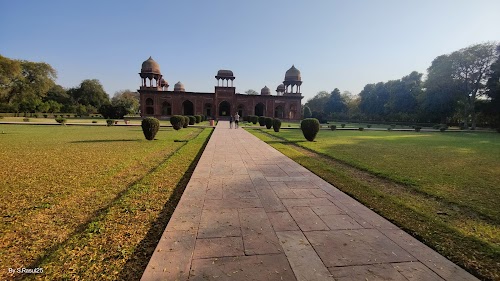
Tomb of Mariam-UZ-Zamani
Agra, India
- Admire the intricate pietra dura inlay work
- Capture photos of the tomb's architecture
- Explore the charbagh gardens
- Learn about Mughal history and Nur Jahan
Known for:
Description:
Mariam's Tomb, also known as I'timād-ud-Daulah's Tomb, is a Mughal mausoleum often described as a 'jewel box' and considered a precursor to the Taj Mahal. Built of white marble and red sandstone, it features delicate inlay work using pietra dura, a technique involving the inlay of semi-precious stones into marble. The tomb is surrounded by beautiful gardens with water channels and walkways, creating a serene and peaceful atmosphere. The intricate carvings, lattice screens (jali), and the overall design make it a masterpiece of Mughal architecture.
History:
Mariam's Tomb was commissioned by Nur Jahan, the wife of Emperor Jahangir, for her father, Mirza Ghiyas Beg, who was given the title I'timād-ud-Daulah (pillar of the state). Construction began in 1622 and was completed in 1628. It marks a transition in Mughal architecture from red sandstone to white marble and is notable for its extensive use of pietra dura. The tomb reflects the strong influence of Nur Jahan in the Mughal court and her refined artistic taste.